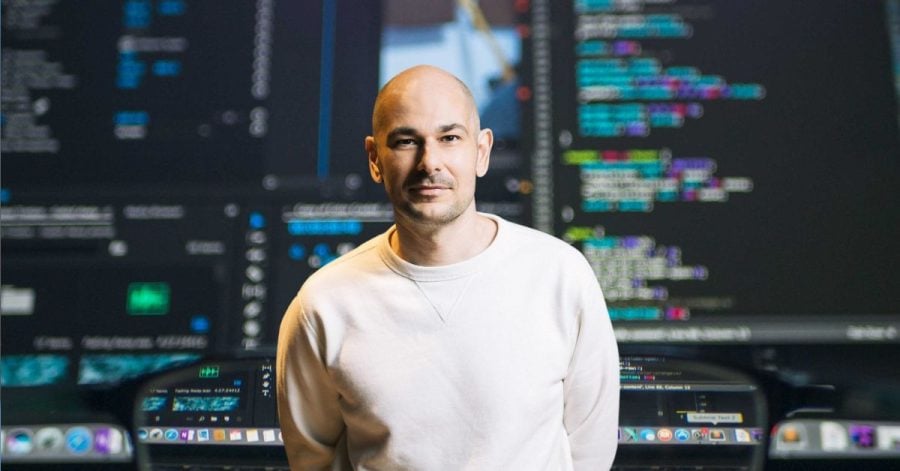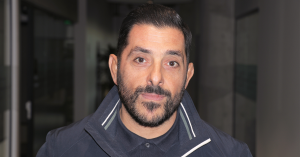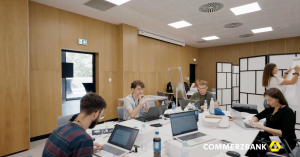The article was updated on November 6th 2023
After spearheading Croatian unicorn Infobip’s efforts to establish itself as a development organization during the past three years, Croatian entrepreneur Ivan Burazin is now on a mission to redefine developеrs’ productivity and security.
The vessel that will take Burazin on this mission is called Daytona – and has the purpose of making lives easier for both developers and enterprises. The project has been one year in the making, and it is partially based on the work that Burazin did with his previous startup called Codeanywhere.
“Codeanywhere is a cloud-based development environment, a very different product is more of a browser-based editor. Daytona is something different – it is basically the infrastructure underneath that runs it,” Burazin tells The Recursive.
In a nutshell, here is how Daytona works: It moves the developer environment from the local machine to the cloud or a remote server. It handles the behind-the-scenes work of connecting this remote developer environment with the integrated development environment (IDE), spinning them up and down as needed. As a result, developers have a seamless experience, feeling like they’re working locally.
In early Novermber, the startup closed a $2M pre-seed round from the founders of Postman, Honeycomb, Netlify, Supabase, Puppet and others. The funds are planned for accelerating product development, hiring to expand the Daytona team, and market penetration within large organizations with self-hosted environment.
“The overwhelming support from individuals and institutions deeply rooted in the DevTools industry is not just a validation, but a collaborative stride toward transforming the developer environment landscape,” he said.
Increasing developer velocity across the organizations
The idea for Daytona started out of necessity – Burazin and his team were getting multiple calls and inquiries about a product that would resolve the issues that both developers and enterprises had regarding the developer environment. Thus, the work on the product commenced.
“It actually has nothing to do with Codeanywhere, but we like to say it’s a spiritual successor, because it is essentially the same mission we started, which is how can we utilize cloud resources to increase developer velocity,” Burazin explains.
There are three key aspects in which this system significantly enhances developer productivity throughout the organization. The first is scalability, which addresses the common challenge of inadequate resources on developers’ laptops. Many companies opt for cloud hosting to create remote development environments using tools like VS Code and JetBrains.
However, this approach works for individuals or small groups of developers. Yet, when dealing with hundreds or thousands of developers, it becomes a logistical nightmare – there’s a lack of security audits, controls, and observability, posing significant risks when hosting development environments publicly.
“It is easy with one or two developers, but when you have literally 500 or 1000 developers that becomes an entire mess because you need a whole DevOps team to manage the spinning up and spinning down of development environments. You don’t have any sort of security audits or controls or you don’t have any observability of who’s doing what, you have no idea what anything, what anyone is doing and that can be very dangerous when you have a publicly hosted development environment,” Burazin explains.
The second crucial aspect is security. An illustrative example is Uber, which incurred a $20 million fine from the Federal Trade Commission (FTC) due to source code leakage. This breach occurred because sensitive source code was stored on an insecure laptop. Consequently, Uber had to introduce a solution akin to Daytona to safeguard its developer environments by housing them on secure servers.
The third and final benefit is twofold, benefiting both the company and its engineers. This system enables developers to instantly create a development environment with a single click or a single line of code.
Additionally, it tackles the notorious “works on my machine” issue, a frequent source of frustration in software development, by ensuring consistent environments for all team members, eliminating the disparities between development setups, and ensuring smoother collaboration and fewer code deployment issues.
“Engineers spend anywhere from 50 to 70% of their productive time on these types of debugging, which they shouldn’t have to do. And so this makes the developers’ lives easier but also it becomes more interesting for the companies itself because then their developers are more productive,” Burazin adds.
Lessons from the past shape Daytona’s future
Burazin also reflects on how his professional journey has led him to this pivotal moment, explaining that one of the driving factors behind his current endeavor was the valuable lessons he garnered from his previous experiences.
Codeanywhere taught him not to approach dev tools conventionally; instead of building from the bottom up and targeting developers, he learned to navigate the terrain of selling to both end-users and enterprises.
His time at Shift honed his skills in catering to the unique needs of these two markets. At Infobip, he gained insight into the inner workings of an enterprise, a realm he had not previously explored.
“Lastly with Infobip I learned a lot about working inside the enterprise because I’ve never done that before. My job was to take a top-down b2b company and add the bottom-up ocean but also as an employee of the company. I was the buyer for other enterprise software so now I know who I’m selling to,” Burazin tells The Recursive.
Looking ahead to the next three to four years, Burazin outlines Daytona’s vision – with the company currently in phase one, it aims to establish itself as the go-to solution for enterprises in the long run.








